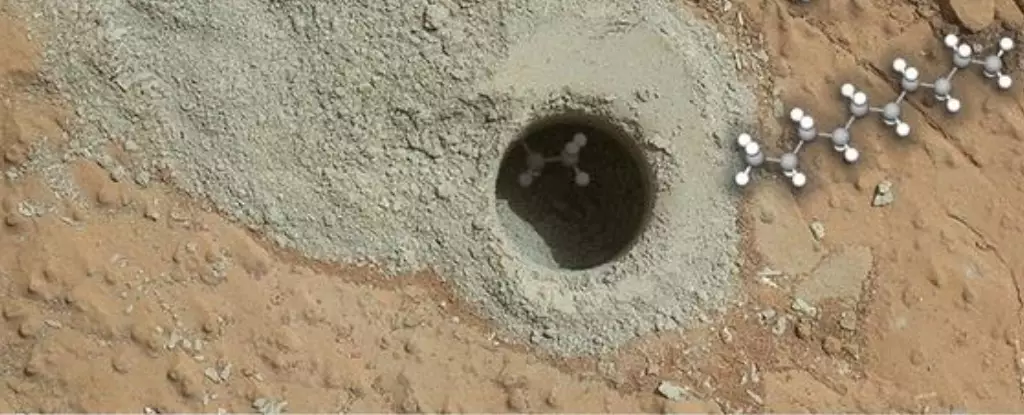The exploration of Mars has long been a topic of fascination for scientists and space enthusiasts alike, particularly when the specter of ancient life comes into play. Recent findings from NASA’s Curiosity rover have reignited this interest, revealing chains of carbon atoms embedded in Martian sediment—a tantalizing discovery that could reshape our understanding of the planet’s potential for life. This revelation moves beyond mere curiosity, inviting us to contemplate the deeper implications these organic compounds may have for our cosmic perspective.
Unraveling the Discovery
Led by Caroline Freissinet from the French National Centre for Scientific Research (CNRS), a multi-national team employed sophisticated sampling techniques to analyze the ancient lakebed on Mars, specifically focusing on a mudstone deposit named Cumberland. The ground-breaking analysis involved heating soil samples to extreme temperatures while carefully managing conditions to avoid contamination from combustion. Under these specialized laboratory settings, the researchers successfully identified long carbon chains—some of the longest ever recorded on Mars—including saturated hydrocarbons like decane, undecane, and dodecane.
The depths of the discovery are profound: while these carbon chains may not necessarily originate from biological processes, their mere presence speaks volumes about the Martian environment. Such organic molecules may serve as breadcrumbs, hinting at not only a dynamic geological history but also the potential for life, past or present. This could signify that Mars once possessed conditions conducive to nurturing life, or at least organic chemistry that mimics the processes we know from Earth.
Implications for Astrobiology
The implications of Curiosity’s findings ripple outward from the red planet to profound questions regarding life in the universe. The analysis of the sedimentary rocks suggests a complex interplay of organic chemistry taking place on Mars, where life might have once flourished under primordial conditions that remain enigmatic to us today. Curiosity’s mission is centered around collecting evidence that elucidates the history of life on Mars, and these recent carbon chains may very well be central to that narrative.
While confirming the existence of these organic compounds, the researchers also underscore the importance of their provenance and distribution—clues that could lead to distinguishing potential biosignatures from non-biological counterparts. The possibility of abiotic processes yielding such complex structures must be considered, yet the tantalizing thought triggers our imagination: Could these compounds be remnants of Martian life forms, however rudimentary or primordial they may have been?
The Dance of Chemistry and Biology
Compounding the excitement of this discovery is the notion that complex organic compounds may emerge from simpler molecular precursors without the necessity of biological input. The analytical experiments conducted have demonstrated that compounds such as benzoic acid can exist alongside the detected hydrocarbons, doing little to negate the hypotheses surrounding Martian biological activity. The researchers draw parallels to Earth, where diverse carboxylic acids exist; these could potentially find a kindred spirit in the Martian geological record.
As our understanding of biochemical processes deepens, so too does the tantalizing prospect that Martian rocks may harbor traces of ancient biochemistry similar to Earth’s. Such comparisons could cement our quest to identify markers of life beyond our planet, shifting the paradigm from merely searching for extraterrestrial life to understanding what that life could have looked like.
The Road Ahead
Despite the profound implications of these findings, the quest for definitive proof of life on Mars remains an uphill battle. Current technology is merely scratching the surface, indicating that the search for biosignatures will require more targeted missions that go deeper into the Martian terrain. The excitement of the Curiosity rover lies not only in its past discoveries but also in its potential to usher in an era of greater exploration and understanding, inspiring future missions armed with the accrued knowledge brought forth by previous research.
In the tapestry of space exploration, the discovery of carbon chains on Mars adds a vibrant thread, enriching our understanding of the universe. As scientists continue to decode the red planet’s secrets, we can only dream of a time when we may definitively answer the age-old question: Are we alone in the universe? Each finding brings us one step closer to unveiling the mysteries of cosmic life, feeding a hunger that reaches beyond the stars.

